Abstract
Cultured cell suspensions of both carrot (Daucus carota L.) and soybean (Glycine max) take up exogenous choline efficiently from their respective growth media. During sustained growth at a concentration near 50 micromolar choline, this compound was taken up at rates which exceeded those at which phosphatidylcholine, is synthesized by cells growing in standard (i.e. choline-free) media. In 50 micromolar choline, both types of cells metabolized this compound to phosphocholine and phosphatidylcholine, but not to other detected metabolites, and marked accumulations of phosphocholine and choline occurred relative to phosphatidylcholine. Pregrowth in 50 micromolar choline for several doublings decreased the rate at which carrot cells transferred 3H from l-[3H3C] methionine into the network of all methylated derivatives of ethanolamine by some 98%. With soybean cells, a decrease of 77% was observed. In both cell types, transfer of 3H into S-methylmethionine, pectin methyl esters, methylated nucleic acids, and nonpolar lipid continued unabated. Gel-filtered extracts of carrot cells pregrown in 50 micromolar choline had marked decreases in the specific activities of S-adenosylmethionine-dependent phosphoethanolamine, phosphomethylethanolamine, and phosphodimethylethanolamine N-methyltransferases; extracts of soybean cells had a similar decrease in phosphoethanolamine N-methyltransferase. The significance of these findings for regulation of the rate of synthesis of methylated ethanolamine moieties is discussed.
Full text
PDF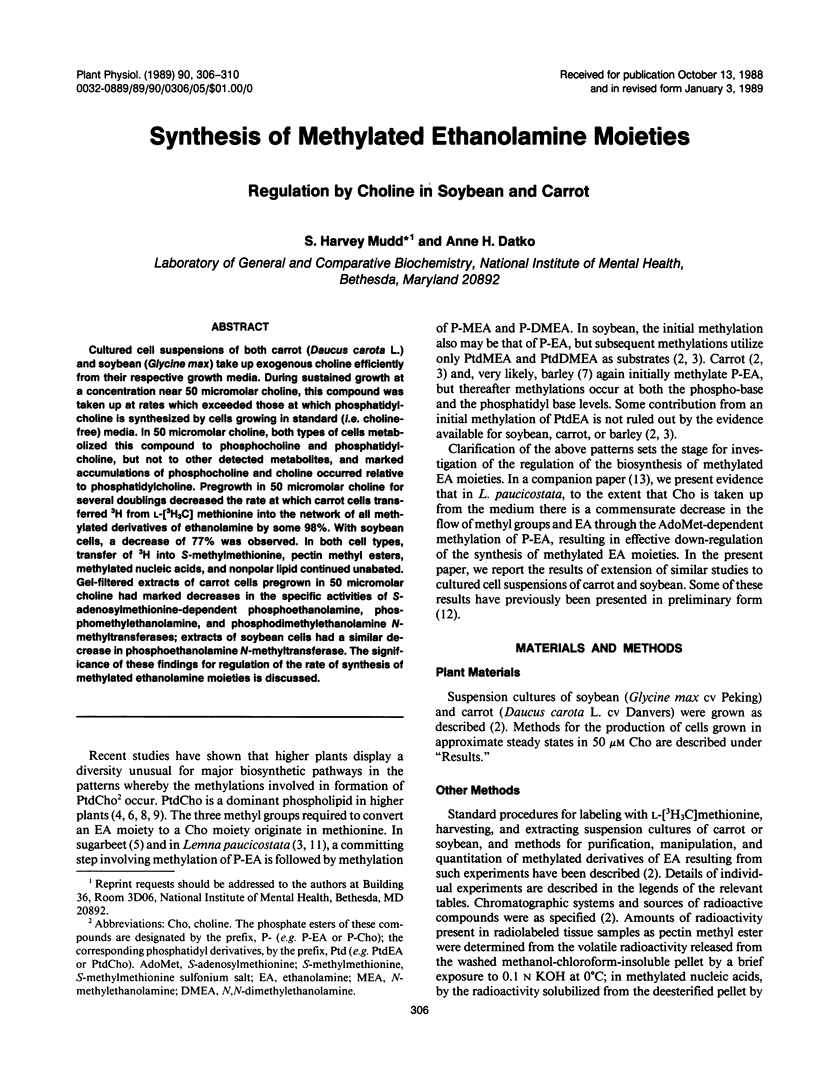
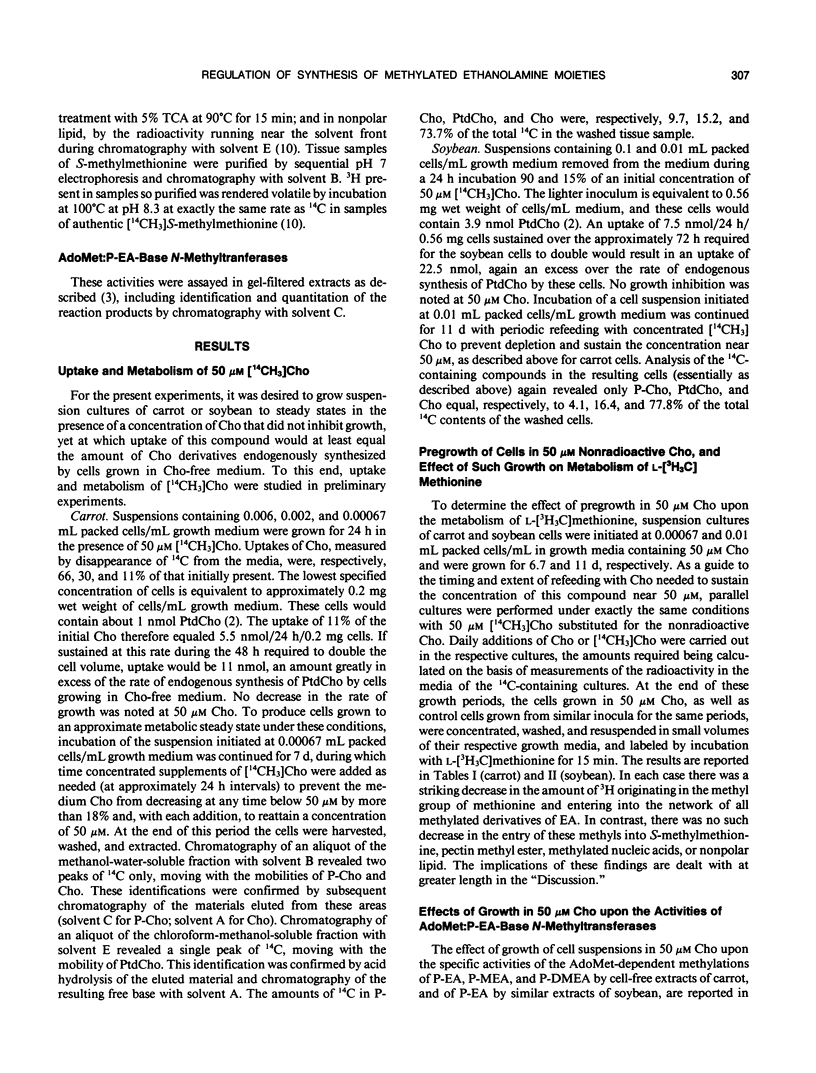
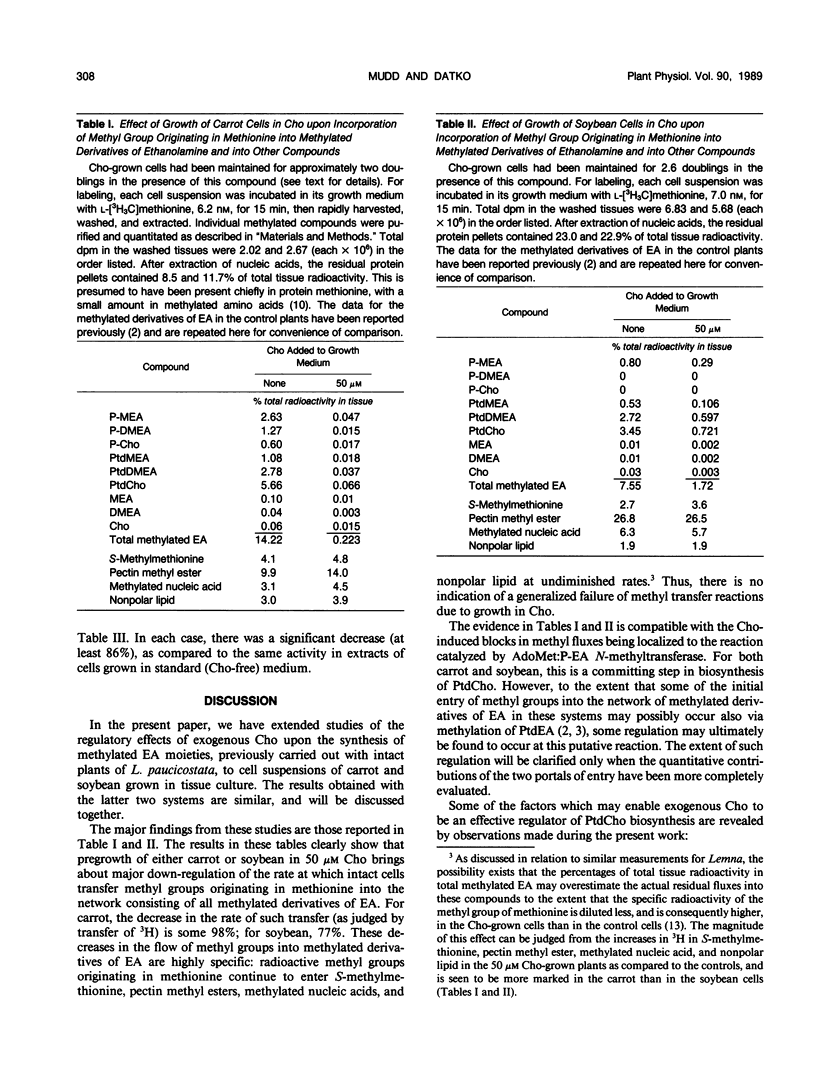
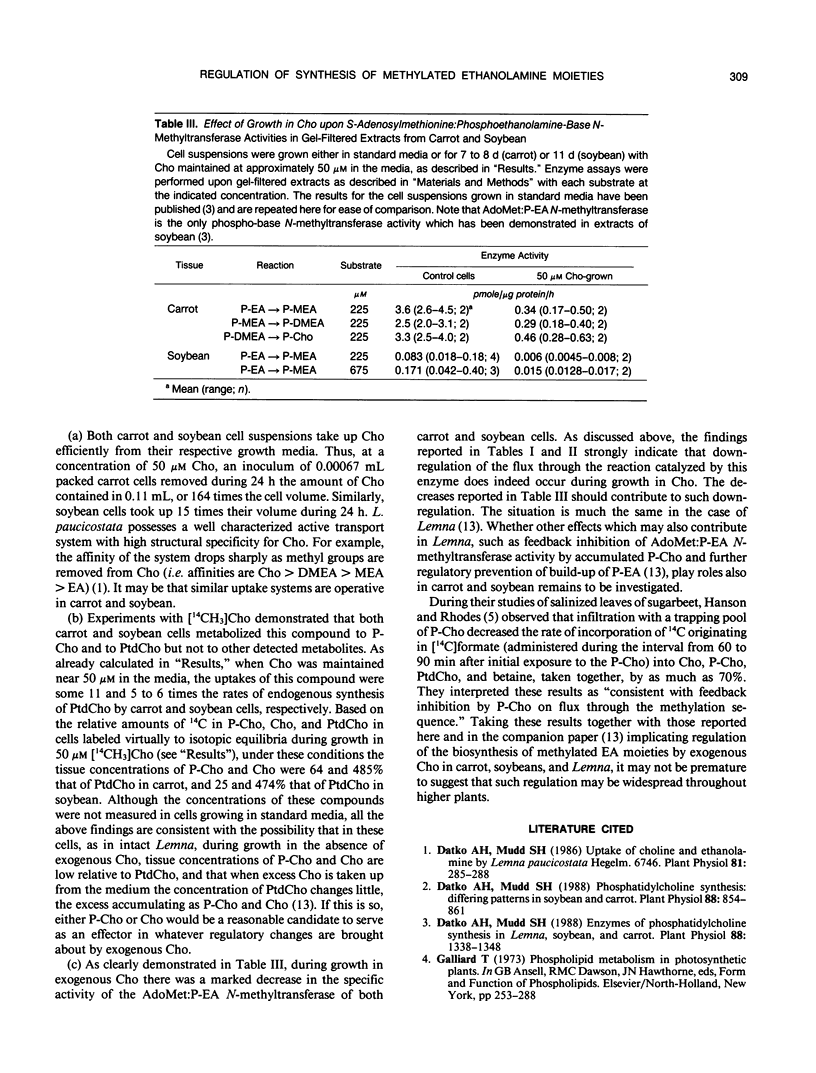
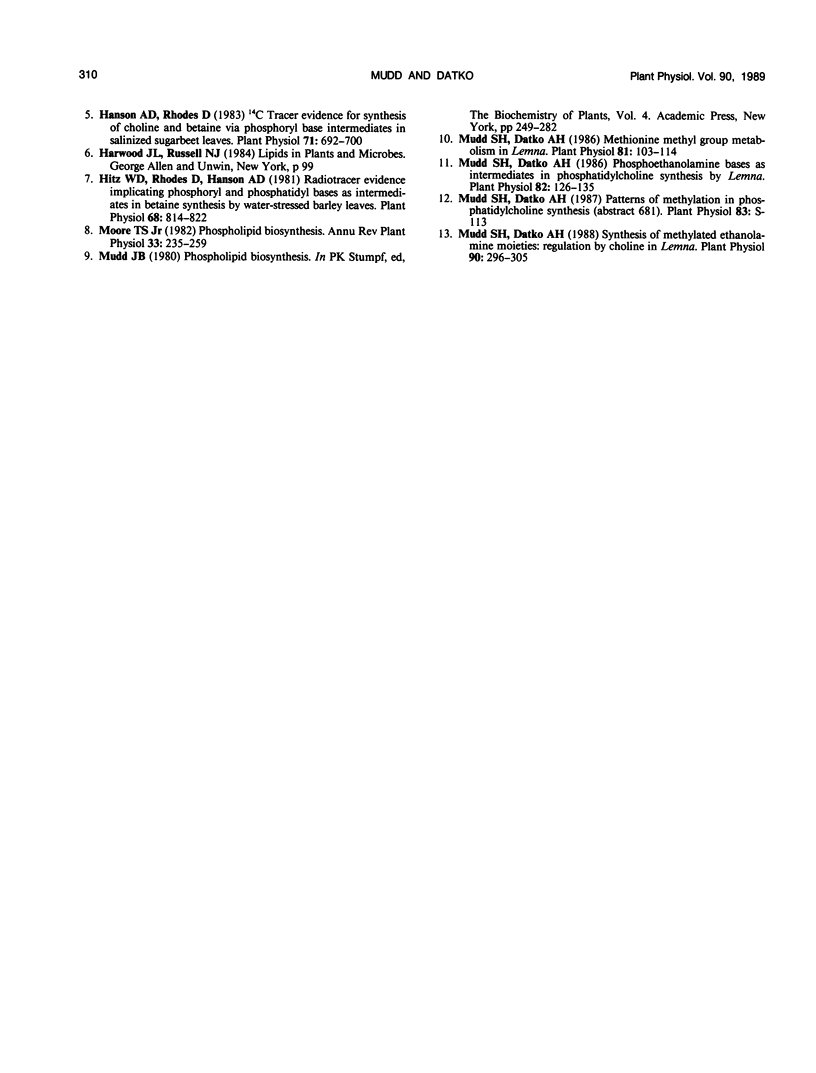
Selected References
These references are in PubMed. This may not be the complete list of references from this article.
- Datko A. H., Mudd S. H. Enzymes of phosphatidylcholine synthesis in lemna, soybean, and carrot. Plant Physiol. 1988 Dec;88(4):1338–1348. doi: 10.1104/pp.88.4.1338. [DOI] [PMC free article] [PubMed] [Google Scholar]
- Datko A. H., Mudd S. H. Phosphatidylcholine synthesis: differing patterns in soybean and carrot. Plant Physiol. 1988 Nov;88(3):854–861. doi: 10.1104/pp.88.3.854. [DOI] [PMC free article] [PubMed] [Google Scholar]
- Datko A. H., Mudd S. H. Uptake of Choline and Ethanolamine by Lemna paucicostata Hegelm. 6746. Plant Physiol. 1986 May;81(1):285–288. doi: 10.1104/pp.81.1.285. [DOI] [PMC free article] [PubMed] [Google Scholar]
- Hanson A. D., Rhodes D. C Tracer Evidence for Synthesis of Choline and Betaine via Phosphoryl Base Intermediates in Salinized Sugarbeet Leaves. Plant Physiol. 1983 Mar;71(3):692–700. doi: 10.1104/pp.71.3.692. [DOI] [PMC free article] [PubMed] [Google Scholar]
- Hitz W. D., Rhodes D., Hanson A. D. Radiotracer evidence implicating phosphoryl and phosphatidyl bases as intermediates in betaine synthesis by water-stressed barley leaves. Plant Physiol. 1981 Oct;68(4):814–822. doi: 10.1104/pp.68.4.814. [DOI] [PMC free article] [PubMed] [Google Scholar]
- Mudd S. H., Datko A. H. Methionine methyl group metabolism in lemna. Plant Physiol. 1986 May;81(1):103–114. doi: 10.1104/pp.81.1.103. [DOI] [PMC free article] [PubMed] [Google Scholar]
- Mudd S. H., Datko A. H. Phosphoethanolamine bases as intermediates in phosphatidylcholine synthesis by lemna. Plant Physiol. 1986 Sep;82(1):126–135. doi: 10.1104/pp.82.1.126. [DOI] [PMC free article] [PubMed] [Google Scholar]
- Mudd S. H., Datko A. H. Synthesis of methylated ethanolamine moieties: regulation by choline in lemna. Plant Physiol. 1989 May;90(1):296–305. doi: 10.1104/pp.90.1.296. [DOI] [PMC free article] [PubMed] [Google Scholar]


